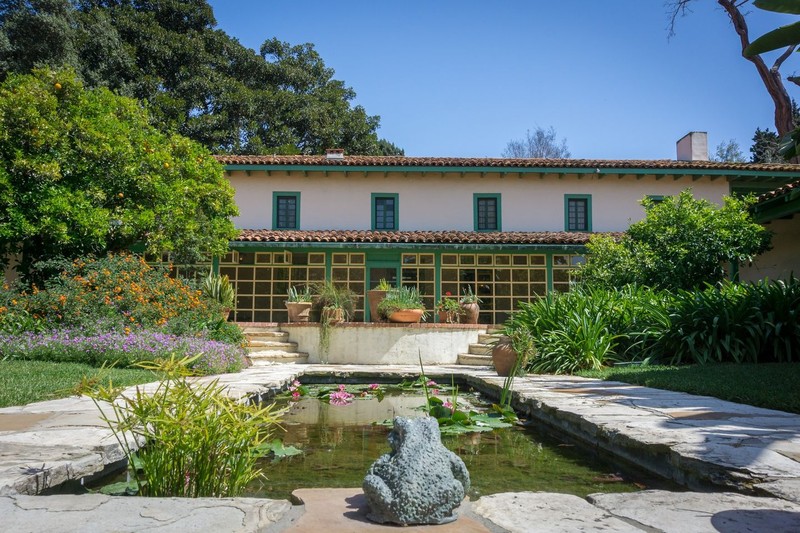RLC Adobe - The Lily Pond
Introduction
Text-to-speech Audio
Images
The Lily Pond

Backstory and Context
Text-to-speech Audio
Benjamin Wilson, who spent time here during the Mexican-American war, said: “…through the large gate in the wall that closed the patio, there was always much going and coming here, for the ranch business involved the use of saddle horses and carriages. It was a sunny, friendly, busy place, much loved and frequented by the many cats and dogs.” When the Bixbys lived at Rancho Los Cerritos, they used this courtyard’s barren space for work as well as family gatherings to celebrate special occasions, like the Fourth of July (when children stayed up late to watch fireworks).
When Ralph Cornell was commissioned to landscape the inner courtyard in the 1930s for Llewellyn Bixby Sr., he sought to create an intimate family garden within the home that simultaneously encouraged the “new” concept of outdoor living to take advantage of Southern California’s mild climate. Cornell’s plan included installing the lawns, lily pond, and brick terrace, and planting annuals for color and native sycamores to buffer the view of nearby neighbors. Despite changes that time has wrought, the courtyard today still offers echoes of the past thanks to the deft hand of Cornell.
Cite This Entry
Maguire, Meighan. "RLC Adobe - The Lily Pond." Clio: Your Guide to History. April 26, 2021. Accessed July 26, 2025. https://theclio.com/entry/24000/tour/14/reverse

